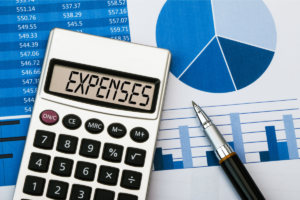Counting the Costs: Estimating Your Expenses for Your Next Home
Calculate and Adding All Costs of Your Next Home Price Estimation
Making the decision to purchase a new home is an exciting new life milestone. Before the journey to this huge investment begins, there’s a need to carefully ponder upon and estimate the expenses of owning sic! a property. Start from the down payment, move on to the mortgage, and then the ongoing maintenance. Let us also not forget about the unexpected expenses; getting a grasp of the entire fee structure is crucial. This piece aims to provide a fair amount of insights and handy tips to make informative decisions about the myriad aspects of estimating the costs associated with your next home.
Comprehending the Initial Costs
A major step in calculating your next home’s expenses is understanding the initial costs involved. These costs generally include the down payment, mortgage, and closing costs!
The Down Payment
A down payment is the upfront amount when you purchase a house. This significant price is instrumental in determining your mortgage terms and monthly payments. Points to consider while making a down payment:
- Definition and Significance: The down payment is the portion of the house’s purchasing price that you pay out of your pocket. It has several purposes, including reducing the amount you need to borrow and proving your financial stability to lenders. A larger down payment leads to better loan conditions.
- Determining the Down Payment Sum: The following factors influence the down payment:

-
- The Mortgage Type: Various mortgage schemes have varying down payment demands. For instance, traditional mortgages usually require a down payment between 10% to 20%, and government-sponsored loans like FHA loans may demand lesser down payment amounts like 3.5%.
- The Requirements of the Lender: Various lenders might have specific down payment requirements depending on your credit score, debt-to-income ratio, and overall financial stability.
- Personal Financial Condition: Your financial circumstances, including your savings and income, will determine how much you can put for a down payment.
- Rules of Thumb for Down Payment Percentages: There are no rigid rules, but here are a few thumb rules:
-
- 20% or greater: A down payment of 20% or greater enables you to bypass private mortgage insurance (PMI), an additional safety cost for the lender if you default.
- 10% to 20%: This is the typical down payment range! Balancing the down payment amount and the requirement for PMI.
- Below 10%: In case of a lower down payment, you may have to pay PMI, which will enhance your monthly mortgage payment.
The Mortgage
Unless you plan to pay for the house in cash! It would be best if you had a mortgage to fund your purchase. Understanding the various facets of a mortgage is vital for expense estimation! Consider these points:
- Mortgage Types: There are multiple types of mortgages, including fixed-rate mortgages and ARMs (adjustable-rate mortgages). Fixed-rate mortgages offer consistent interest rates and monthly payments throughout the loan term, whereas ARMs usually have a fixed rate for an initial period that then adjusts annually.
- Interest Rates and Terms: The interest rate directly impacts your monthly payments. Lower rates lead to lower payments, and vice versa. Mortgage terms (repayment period) also affect monthly costs. Shorter terms can have higher monthly payments but lower interest fees overall.
- Calculating Monthly Mortgage Payments: To estimate monthly fees, consider the following points:
-
- Principal Amount: The amount you’ve borrowed for the home purchase!
- Interest Rates: Annual rate of the mortgage.
- Loan Term: Years you’ve been given for the loan repayment.
- Taxes on Property and Insurance: Monthly payment may include a proportion for property taxes and homeowner’s insurance. It’s often paid in an escrow account.
- Schedule of Amortization: This is a breakdown of monthly payments into principal and interest over the loan term.
- Extra Expenses that Include PMI: If your down payment is less than 20% of the house’s purchase cost, you might be asked to purchase PMI. PMI offers protection to lenders in case you default, but it is an extra cost!
Costs of Closing
These costs come with the transfer of ownership from the seller to the buyer, and they mainly include the fees for services rendered while buying a home.
- Components of Closing Expenses: They can vary but often include:
- Loan Initiation Fees: Fees asked by the lender for loan processing.
- Appraisal Costs: The cost of finding the house’s worth.
- Insurance Title and Title Search Costs: These give protection against ownership issues or problems related to the title.
- Lawyer Costs: Legal costs during the closing process!
- Costs of Inspection: They include inspection fees for the house.
- Escrow Fees: They include managing process costs and funds!
- Document Recording Costs: Recording costs for documents and deeds!
- Estimating and Managing Closing Fees: typically, the closing fees range between 2% to 5% of the house’s purchase price. Getting a Loan Estimate from your lending institute is advisable to help you manage your budget.
- Negotiating with the Seller or Lender for Decrease in the Fees: Sometimes, you can negotiate with the seller to pay a portion of the closing cost or ask the lender to decrease fees through certain loan programs. Explore these chances to minimize the initial expenses.
Down payment, mortgage, and closing fees must be carefully estimated. The next section further provides the expenses to be considered to get the overall cost of a house.
Ongoing costs
Besides the first payment from buying a house, it’s also helpful to consider the nonstop charges linked to owning a home. These include property tax, insurance for homeowners, utilities, and maintenance. Estimating these expenses can help in budgeting.
Property Taxes
Property taxes are imposed by the local government and are based on the assessed value of your property. These taxes fund public services and infrastructure. Things to keep in mind:
- Understanding Properties Taxes: Property taxes include understanding local property tax rates and assessing ways.
- Factors Affecting Property Rates: The rates can be influenced by the worth of the property, local tax laws, and any mortgage or discounts!
- Calculating Estimate of Property Taxes: You can estimate property taxes by multiplying your property’s estimated value by the local tax rate. Property tax valuations are usually available through the local tax assessor’s office!
- Lower Tax Property Strategies: Look for strategies to potentially decrease your property taxes, such as appealing the assessed value if it seems high. You can also take advantage of any tax exemptions available to homeowners in your area.
Homeowner’s Insurance
Insurance for homeowners will protect your house and belongings against any damage or loss through fire, theft, or natural tragedies. The following aspects are to be considered regarding homeowner’s insurance:
- Importance and Options for Coverage: Homeowner’s insurance is important because it will protect your investment in case something goes wrong. It covers your belongings, accidents, and additional living expenses if you cannot live in your home due to a disaster!

- Appropriate Coverage Decisions: Use professionals in the insurance industry to determine what type of coverage will be best for your house. The decision is based on factors like the replacement cost and specific threats in your area.
- Comparing Policies and Obtaining Quotes: Get quotes from different insurance providers to get the best coverage for your house. Compare policies regarding coverage, deductions, and customer reviews. Find ways to decrease your insurance premiums.
- Insurance Premiums Reduction: This can include safety measures like installing security systems, fire-resistant materials, and smoke detectors. You can also pair your homeowner’s insurance with other policies, such as auto insurance, which might qualify you for discounts!
Utilities
This includes electricity, water, garbage, and other services to make your home run smoothly. The following points are to be considered while estimating monthly expenses on utilities:
- Estimating Costs Monthly: Contact utility providers or check previous bills to guess the monthly cost. Factors such as the size of the house, the number of people in the house, and local utility tariffs will change your monthly utility costs.
- The Expenses Impacted by Factors: Energy consumption, insulated houses, energy-efficient equipment, local tariffs, and climate will all affect the utility costs.
- Homes Energy-Efficient Advice: Start adopting methods to conserve energy, such as using efficient devices, LED lights, programmed thermostats, and insulation to save costs.
- Alternative Energy Source Considering: Consider trying renewable energy sources like solar or geothermal power. They will not only lessen dependence on traditional utilities but also help cut costs.
Home Up-keeping
Regular home maintenance is essential to preserving the worth and functionality of your house. It’s important to budget for upkeep and unexpected fixes!
- Maintenance Tasks and Costs: Regular maintenance tasks include servicing the HVAC system, cleaning gutters, landscaping, and controlling pests. Calculate these associated costs based on the size and condition of your house.
- Allocating funds for Amendments and Makeovers: Set aside a portion of your monthly budget or create an emergency fund specifically for amendments and renovations. Amendments or significant renovations, like replacing the roof or remodeling the kitchen, should be planned for!
- Making an Emergency Fund for Unexpected Costs: Having an emergency fund for anything unexpected is always good. A good target is to save 1% to 3% of your house’s overall worth annually.
- Calling Professionals vs. DIY: You can do maintenance tasks to save money. However, larger or more complex jobs might need professional assistance. Make a call based on your skills, free time, and the job’s complexity!
Estimating these expenses will give you a clear idea of your financial situation. Your budget should include taxes, insurance, utilities, and home maintenance costs. The next segment will delve into the unexpected costs homeowners may face!
Hidden and Unexpected Charges
When estimating the expenses for your new home, remember to consider the hidden and possibly surprising costs you might encounter during the home-owning journey. If you don’t keep them in mind, you may be in for an unpleasant surprise; here’s what to look out for:
Inspections at Home
Before purchasing a house, ensure a full inspection is conducted to identify underlying issues. Consider these points while conducting a house inspection:
- Necessity of Thorough Inspections: A house inspection helps identify structural issues. It’s important to uncover such issues before the purchase is completed.
- The Price of Different Types of Inspections: Depending on the property, you may need more than one inspection. This could be a general house inspection, pest inspection, testing for radon, or mold inspection. The fees for each inspection can range from a hundred to a few thousand dollars.
- Preparing for After-Inspection Issues: If the inspection finds serious problems, you might need to negotiate with the seller. This could involve having the seller pay for repairs or reconsidering your decision. You will need to budget for such circumstances!

Fees for the Homeowners Association (HOA)
If you’re buying a property under a homeowner’s association (HOA), you’ll likely have to pay HOA fees. These contribute to the upkeep of shared facilities:
- Understanding HOAs and Their Fees: HOAs are responsible for maintaining the area’s aesthetic, enforcing regulations, and managing shared facilities. The fees account for such expenditures, which change depending on the amenities provided by the community.
- Evaluating HOA Services and Supplies: Evaluate the HOA’s services and see if they align with your lifestyle.
- Managing HOA Fees and Assessments: Include monthly HOA fees in your budget. Sometimes, HOAs add extra charges for repairs or upgrades to common areas. You should also budget for this.
Home Improvements and Customizations
You’ll probably want to make changes upon moving into a new house. Let’s consider the following problems regarding home improvements and customizations:
- Budgeting for Upgrades and Repairs: Understand the condition of your home and then appropriately plan and allocate funds for necessary renovations and upgrades.
- Improvements that Add Value and are Necessary: Prioritize those improvements that add the most value to the house or meet important needs.
- Costs for Customizing and Decor: Customizing the house with décor and other personal touches can also cost money. Make sure to account for these in your budget.
Emergency Situations and Repairs
Homeownership comes with the possibility of sudden repairs and emergencies! Think about these points:
- Emergency Funds for Unexpected Repairs: Set aside a chunk of an emergency fund- in case of unforeseen expenses. Aim to save 1% to 3% of your home’s value annually.
- Allocating Emergency Funds: As a rule of thumb, aim to save 1% to 3% of the total value of your house each year!
- Understanding Home Warranties: Home warranties can cover the cost of repairs and replacements. Look at the fees, coverage limits, and plan terms.
Long-Term Financial Considerations
When calculating your next home’s expenses, it’s vital to consider the long-term financial implications of homeownership. These considerations involve market conditions, home resale value, mortgage refinancing opportunities, and strategies for retirement and investment.
Resale Value and Market Conditions
Understanding your home’s potential resale value is relevant for long-term planning. Following things to consider:
- Factors that Influence the Resale Value of the Home: Variables that affect the home’s resale value. It includes location, local school districts, property size, etc.

- Understanding Trends in the Real Estate Market: Monitor local real estate market conditions.
- Long-term Appreciation Potential: Although there are no guarantees, real estate does hold the potential for long-term appreciation!
Refinancing the Mortgage
Refinancing the mortgage can help save a lot of money. Aspects of mortgage refinancing to keep in mind:
- Evaluate Refinancing Options: Regularly assess the mortgage market to see if refinancing is a good idea!
- Determining the Savings and Advantages: Determine how much you can save through refinancing. Compare your existing loan terms with the new terms.
- Timing and Possible Risks Considerations: Time the refinancing correctly. Also, consider risks such as prepayment penalties and the break-even point!
Plans for Retirement and Investment Strategies
- Including homeownership in your retirement and strategies for investment are crucial elements. Things to keep in mind:
- Homeownership in Retirement Planning: Consider how homeownership fits into retirement plans!
- Real Estate as an Investment: Real estate is attractive, but always carefully weigh the risks and rewards.
- Taxes and Strategies: Consult a tax professional to understand the tax implications of owning a home.
After considering the initial purchase, ongoing costs, hidden costs, and long-term obligations, you can plan your next home budget and be ready. Home inspections, HOA fees, home improvements, and unexpected repairs should all be factored into the budget. Your home’s resale potential, market conditions, mortgage refinancing, retirement, and investment will help you plan for a secure financial future. At the end of the day, be ready for every aspect of your homeownership journey.
To learn more details, let’s talk with Amar REALTOR®
Let’s schedule a meeting to review all your Real Estate goals!
![]()
Please Click to schedule a time on my online calendar at no cost!
https://www.amarrealtor.com/meetingwithamarrealtor/
Contact Amar REALTOR® today for more information about Buying/Selling a Home in the Bay Area!
Amar REALTOR® offers expert real estate services with proven results in the Bay Area Housing Market, including Homes for sale in Santa Clara County, San Mateo County, Contra Costa County, and Alameda County.
More Interesting Information about Bay-Area Real Estate
A Beginner’s Guide to Purchasing a Fixer-Upper Home as a First-Time Buyer
The Ultimate Decision: Should First-Time Homebuyers Consider Fixer-Uppers?
The Risks and Rewards of Investing in a Fixer-Upper Home as a First-Time Buyer
Fixer-Upper vs. Move-In Ready: What First-Time Homebuyers Need to Know
First-Time Homebuyers: Types Of Mortgages
The Risks of Unlicensed Contractors
First-Time Homebuyers: What You Need To Know Before Relocating?
Let's Connect with Amar Realtor®
We would love to hear from you! Please fill out this form and we will get in touch with you shortly.
